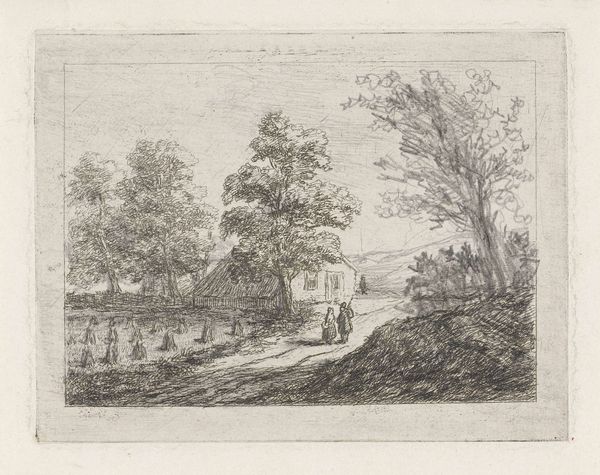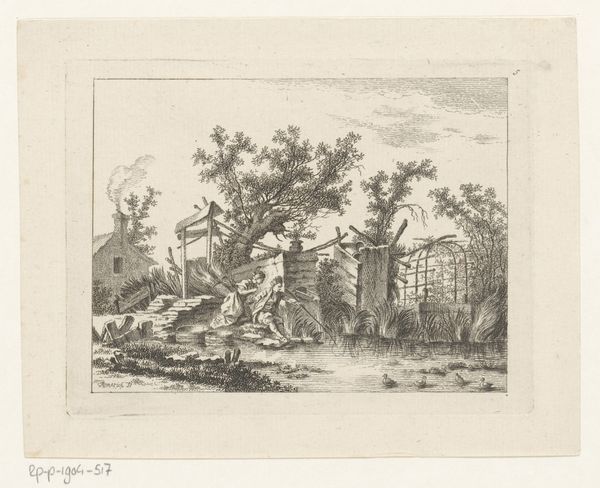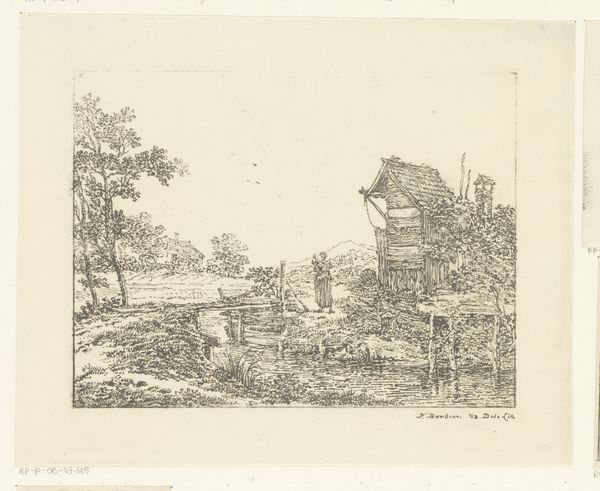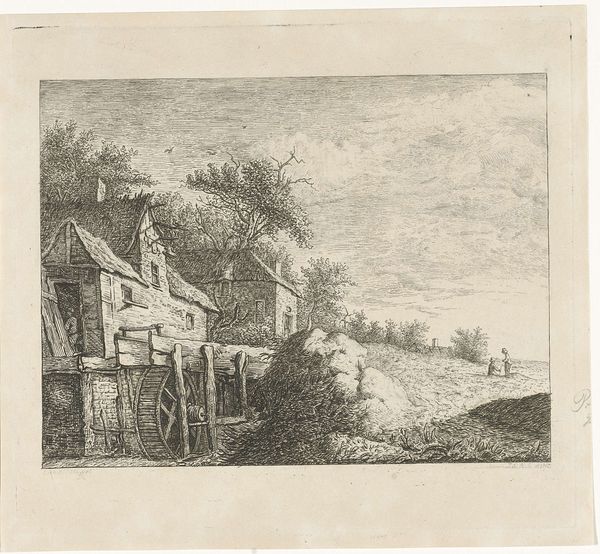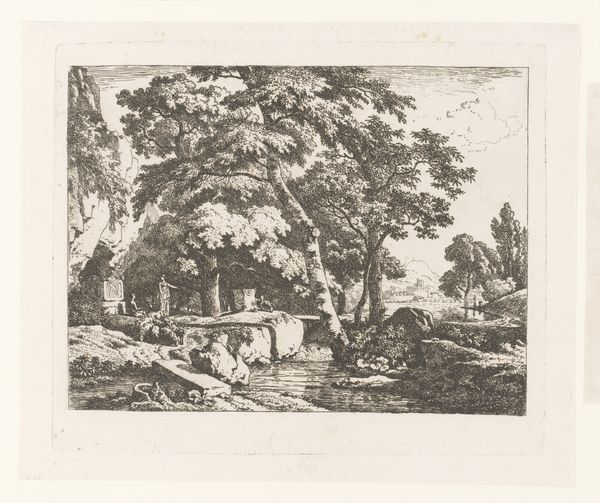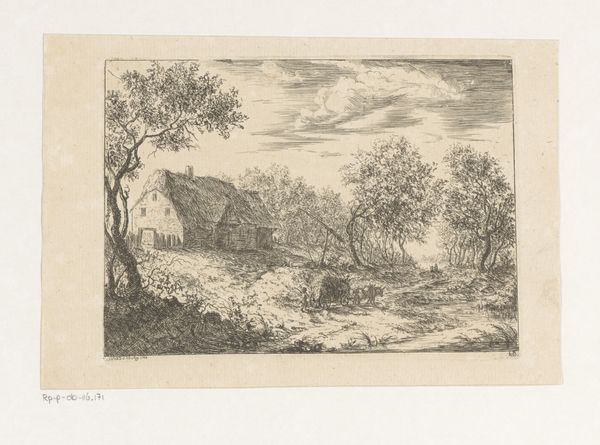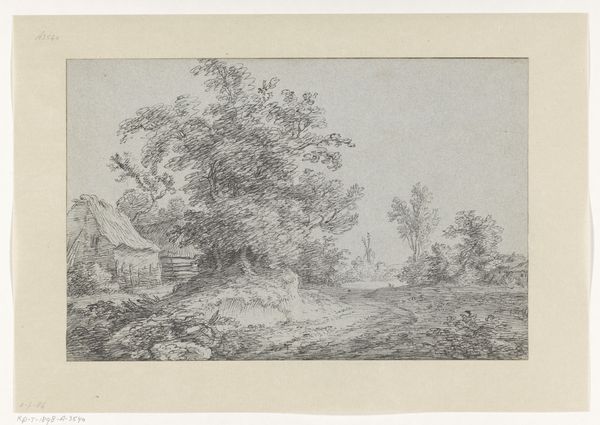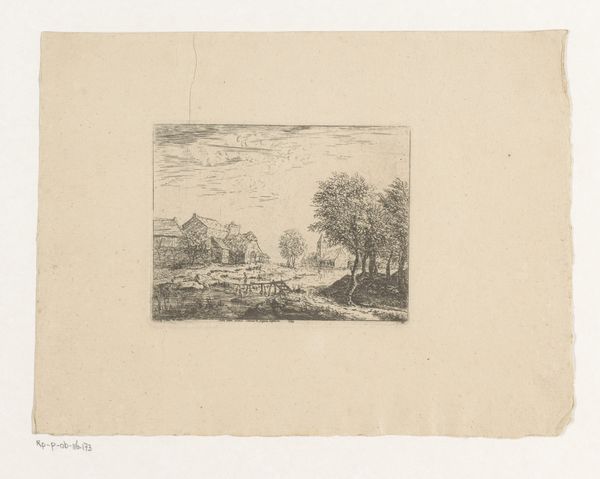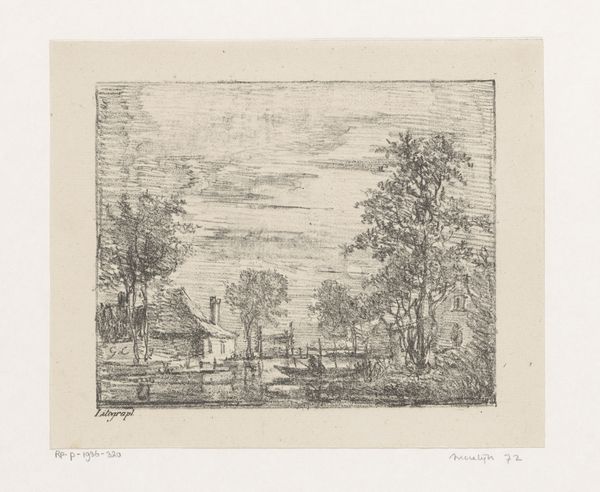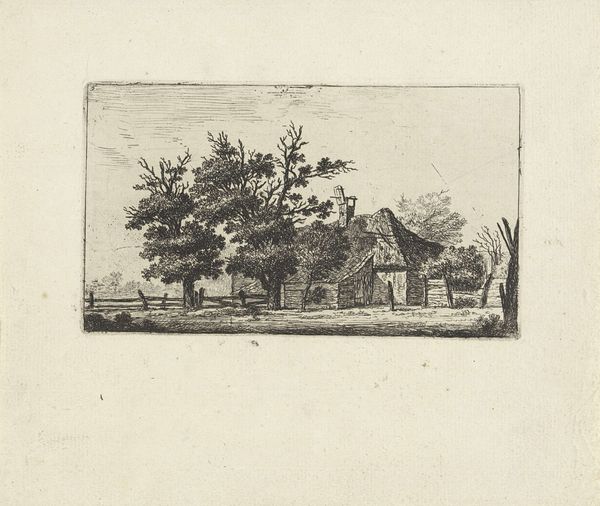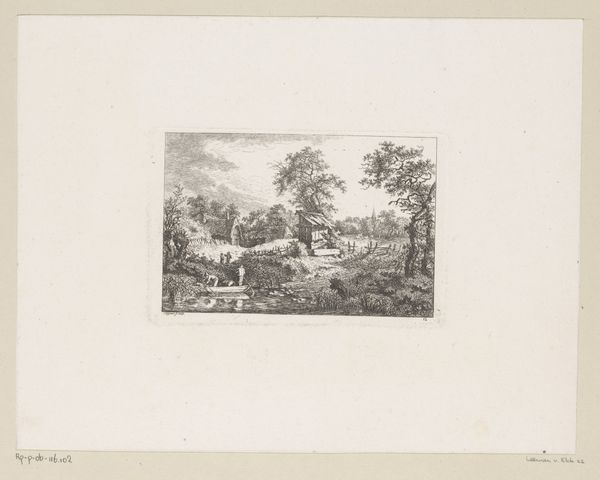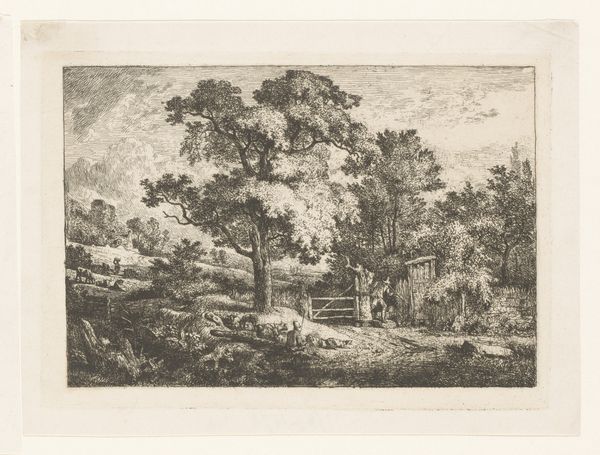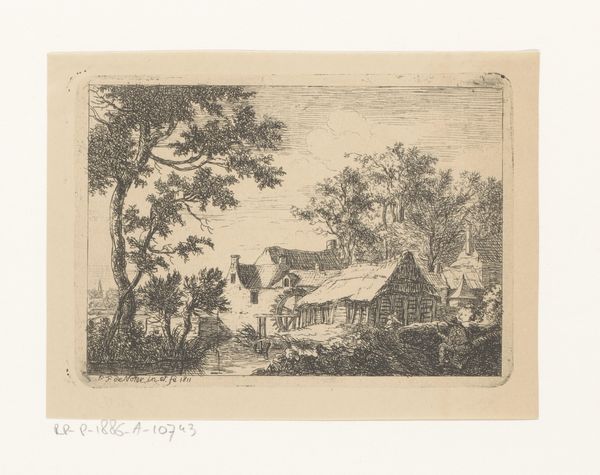
Dimensions: height 96 mm, width 110 mm
Copyright: Rijks Museum: Open Domain
Carl Friedrich Löbbecke made this small landscape with a barn sometime in the 1800s, using etching techniques. Look closely and you’ll notice the rich texture. This isn’t simply drawn with a pen, but instead uses a metal plate, likely copper, to create the image. The artist would have coated the plate with a waxy substance, drawn the design through it with a sharp needle, then bathed the plate in acid, which bites into the metal where exposed. This painstaking process demands precision and control. The depth and darkness of the lines are determined by the amount of time the plate spends in the acid bath. Prints like this were often made for commercial purposes, to be sold inexpensively. Löbbecke's skill transforms a simple scene into something quite special, reminding us that even in mass production, the hand of the maker leaves its mark. It challenges us to look beyond the subject matter and appreciate the craft that brings it to life.
Comments
No comments
Be the first to comment and join the conversation on the ultimate creative platform.
